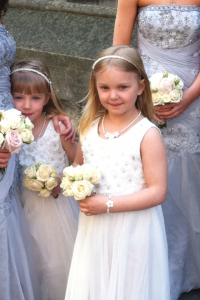Dec
2018
Junior ISA Offers Tax Efficiency to the Bank of Mum and Dad
DIY Investor
8 December 2018
According to the Institute for Fiscal Studies, those born in the 60s and 70s are the first generation since the Second World War to be poorer than their parents.
Those leaving further education in 2018 face the prospect of student debt in excess of £50,000, fierce competition for employment , wage stagnation and the sky high cost of accommodation.
According to the Office for National Statistics there were over 800,000 births in the UK last year, an increase in the birth rate of 18% in a decade and it seems that the ‘Bank of Mum and Dad’ is going to have to work harder than ever in order to be able to help out in the future.
It is generally accepted that one of the most important factors in the achievement of a successful outcome to an investment strategy is to start early and to continue investing for a long time and it is now more important than ever that parents pull out all the stops to give their children a financial head start in life.
‘start early and continue investing for a long time’
A whole range of savings and investment plans exist and since November 2011 when the Junior ISA replaced Child Trust Funds, they have been able to support their loved ones in a tax-efficient way.
Parents can save tax-free for their children up to the age of 18 through a Junior ISA up to an allowance of £4,260 for the tax year 2018/19 – with the current UK birth rate at 1.98 per woman that could see the average family put £8,435 to work without the Chancellor getting a look in.
In addition to a Junior ISA a diligent saver aged 16 or 17 can also invest up to £20,000 per annum into a Cash ISA, meaning that for the tax year 2018/9 they could have a total tax free allowance of £24,260.
Junior ISA
Like a normal ISA, there is a cash and stocks and shares option for the Junior version, but remember, you are not investing for yourself but for your child, who will be the only one able to access the money when they reach the age of 18 except in cases of death or terminal illness.
Stocks and shares Junior ISAs work like a normal stocks and shares ISA but can be more risky than the cash alternative and will usually attract annual management and platform charges.
 Junior ISAs are a long term investment vehicle and it is very important that you select a provider that offers you the pricing structure and investment choice appropriate to you requirements.
Junior ISAs are a long term investment vehicle and it is very important that you select a provider that offers you the pricing structure and investment choice appropriate to you requirements.
Make sure too that you have the ability to access the account in a way that suits you in order to make investments or monitor performance.
Making the wrong choice at the outset can incur punitive transfer charges if you decide to switch horses later on.
‘making the wrong choice at the outset can incur punitive transfer charges’
A Junior ISA can invest in a very large range of equities, funds and investment trust and it is important that you do your homework in order to achieve a balanced portfolio of investments that will perform according to the chosen time-horizon which may differ from your own investment portfolio.
The same considerations apply to a Junior ISA as any other account type when selecting a platform – does it deliver the right combination of service and charges for your requirements?
Then do an ‘apples and apples’ comparison of a couple of providers on administration fees, fund and share dealing costs, regular investing charges and any other fees.
In the post-RDR investment world and in the spirit of the FCA’s initiative to ensure that platforms and providers of financial products deliver transparency and good value, it is now generally simpler to compare one product with another.
If you plan to regularly invest for your child make sure the cost of doing this is as low as possible, by either finding a platform that offers discounted regular monthly investment – some as low as £1.50 – or use one that offers free fund dealing.
The predecessor to the Junior ISA, the Child Trust Fund (CTF), gifted £250 at birth to all babies born on or after 1st September 2002 with a similar lump sum at the age of seven.
Parents could top this up by up to £3,720 tax-free each year, and could continue to do so when the Junior ISA replaced it in 2011.
No withdrawals can be made from the account until the child reaches 18 and when the Junior ISA came along the government withdrew its support for CTFs and no transfers were allowed into Junior ISAs.
However, CTF holders were faced with a dwindling choice of investment options as fund providers lost interest in the defunct product and in a volte face the government allowed transfers from CTFs into JISAs with effect from 6th April 2015, with the only caveat that the entire fund has to be transferred.
Things to Consider
Money put in cannot be taken out until the child is 18 and when they reach that age, the pot is theirs alone to do what they will with it.
Alternatives to a Junior ISA could be to save into a standard child’s savings account, invest using a standard DIY investing platform account or select a children’s specific investment plan and an attraction may be that the account can be accessed before the child reaches 18.
‘the pot is theirs alone to do what they will with it’
Investment companies, banks and building societies often offer children’s savings plans, which are designed to be tax efficient; children are taxed on interest on savings just like adults and can earn up to £17,850 on savings tax free – £11,850 personal allowance, £5,000 starting saving allowance and £1,000 personal savings allowance (PSA).
Parents and step-parents can gift their children as much money as they like, but there is a rule that the money can only earn up to £100 in interest a year tax-free. Money given by grandparents and other adults is not subject to this cap.
If you are not using all of your own annual ISA allowance you could set aside some of this to invest for your children, with a pot earmarked for them within your own DIY investing account.
Although it may not work for those that max out on their allowance or have a large number of children, a couple with two children could efficiently accommodate two additional savings plans for their children within their existing stocks and shares ISA.
Transferring From a CTF to a Junior ISA
Transfers operate in the same way as moving from one ISA provider to another.
 Once you have chosen a provider to move to it will typically take up to 15 working days to transfer to a cash account and 30 days for stocks and shares; you have to transfer the full amount from your CTF before then closing it and the existing provider cannot refuse.
Once you have chosen a provider to move to it will typically take up to 15 working days to transfer to a cash account and 30 days for stocks and shares; you have to transfer the full amount from your CTF before then closing it and the existing provider cannot refuse.
There is a risk that CTF providers will no longer deliver a good service for existing holders and the ultimate recourse for anyone affected by this is the City regulator, the Financial Conduct Authority.
There are 6m children with cash in CTFs, with an estimated 700,000 dormant accounts.
The Treasury has also said the government will seek powers to intervene if it appears the CTF market is no longer looking viable.
What Investments Should you Consider in a Junior ISA?
Investing for children is a long-term game, so you can afford to take more risks than you might do with your own money but you should still make sure that you create a balanced portfolio to ensure that your risk is spread across sectors and asset classes.
Unless you are a dedicated DIY investor then picking individual shares may not be the best move; a fund or investment trust will allow you to spread your risk and require less work.
Try to select a complementary range of investments, balancing growth investments – those in companies where you expect to see a rise in their share price over time and mainly deliver returns – with income investments – companies that that pay dividends which can be reinvested to deliver solid returns from compounding over time.
Charges are a key consideration – high management fees eat into returns and over 18 years this can deliver a sizeable drag on how much an investment makes for your child.
‘Charges are a key consideration’
Passive tracker funds carry low management charges – the HSBC FTSE 250 Tracker, for example, which tracks the mid-share index has an Ongoing Charges Figure (OCF) of 0.17% and the Vanguard FTSE 100 UCITS ETF has an OCF of just 0.09% – whereas some contend that the improved returns from a good active fund manager more than justify the additional cost; choose wisely though because many active funds may charge handsomely yet still underperform passive index trackers.
Increasingly popular are investment trusts which offer a managed portfolio but with low fees.
With so many things to consider, it may just be too tempting to let the ISA deadline slip and ‘start next year’ – but then spare a thought for those facing student loans of £50,000 and the fact that the average age of a first time buyer in London has now topped 40 – and think what an even modest regular savings and investment plan could do to help your children in the future.
One response to “Junior ISA Offers Tax Efficiency to the Bank of Mum and Dad”
Leave a Reply
You must be logged in to post a comment.
[…] in November 2011 to replace the Child Trust Fund, the Junior ISA (JISA) allows up to £4,080 to be saved tax-free each year for their child; parents and carers of children […]